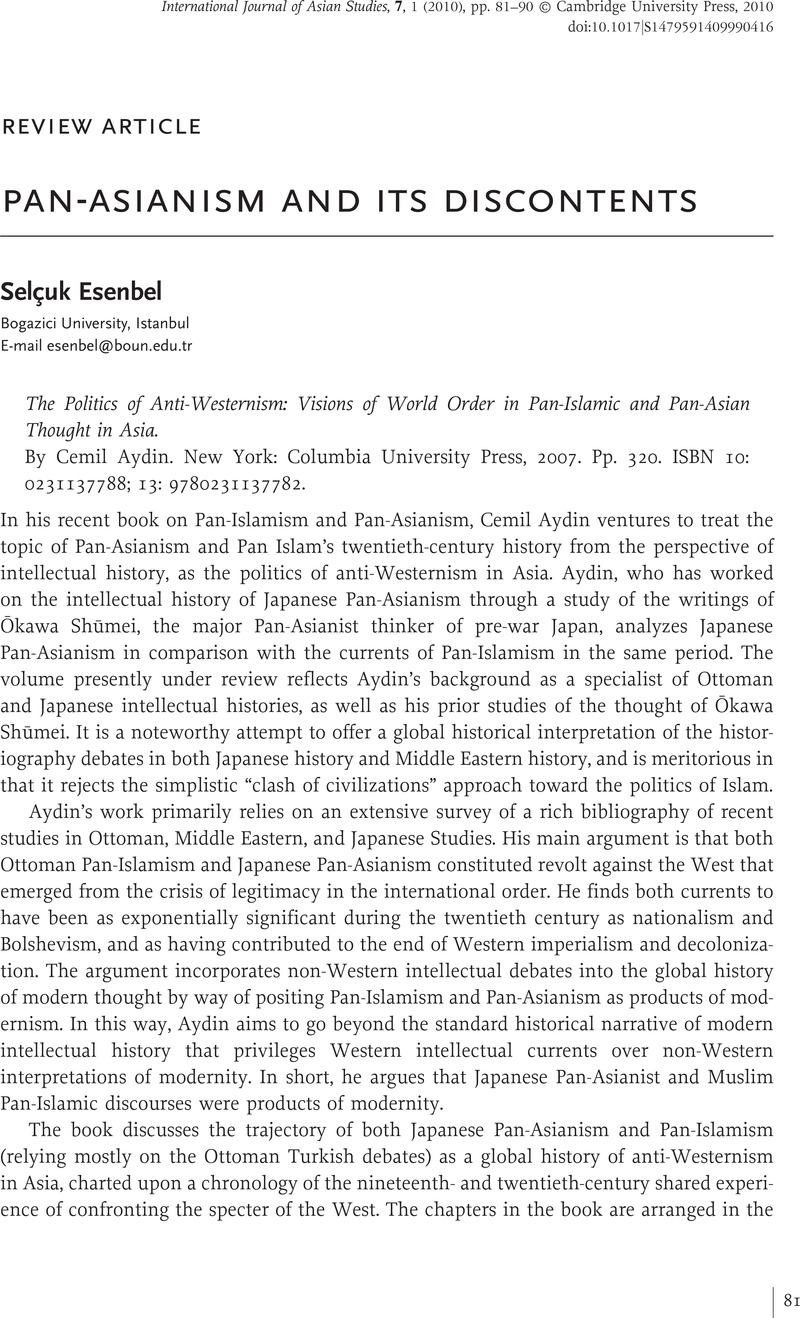Crossref Citations
This article has been cited by the following publications. This list is generated based on data provided by Crossref.
Saaler, Sven
2014.
THE KOKURYŪKAI (BLACK DRAGON SOCIETY) AND THE RISE OF NATIONALISM, PAN-ASIANISM, AND MILITARISM IN JAPAN, 1901–1925.
International Journal of Asian Studies,
Vol. 11,
Issue. 2,
p.
125.



